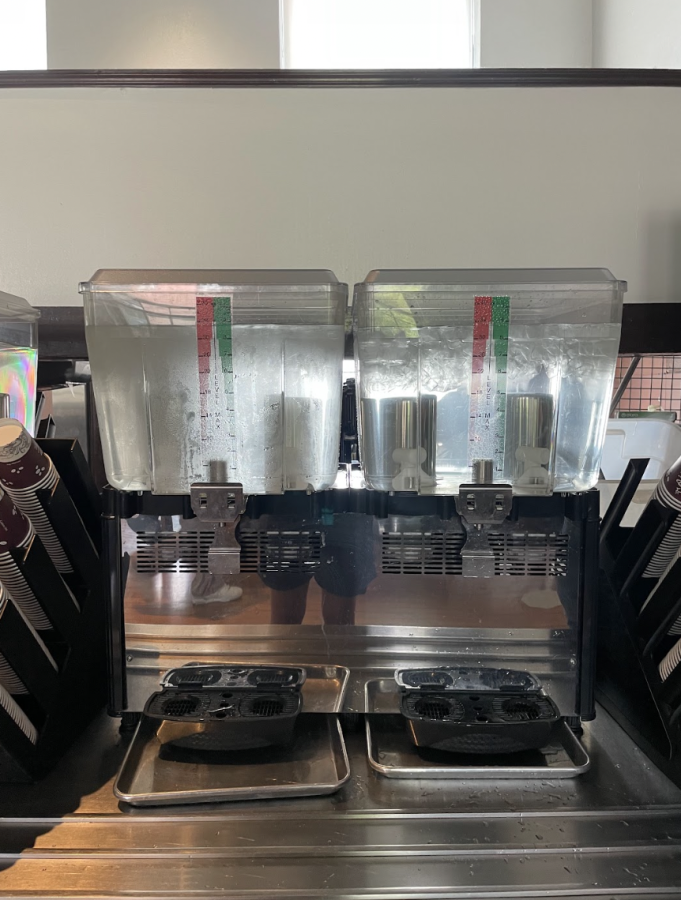How About We Stick to Water
June 10, 2023
According to the Centers for Disease Control and Prevention (CDC), childhood obesity has more than tripled over the past three decades. As of 2008, more than a third of all children in the United States were either overweight or obese. That is a problem. The average teen consumes nearly 15 percent of their daily calories from sweetened beverages. That is also a problem. The facts are indisputable: Obesity is rampant among young people in America, and sugary drinks contribute significantly to this epidemic. The Harvard School of Public health notes that there is sufficient scientific evidence that decreasing sugar-sweetened beverage consumption will reduce the prevalence of obesity and obesity-related diseases. So why do schools, where kids spend around 35 hours per week, enable the consumption of these beverages? The answer is likely ignorance, which must be rectified.
Childhood obesity has numerous harmful effects. According to the National Library of Medicine, it can result in the development of type 2 diabetes, bone or joint problems, sleep apnea, and mental/social/emotional issues such as poor self-esteem and stigmatization. In the long term, childhood obesity also increases the risk of developing diseases such as osteoarthritis, cancer, and heart disease.
In addition to obesity, soda and sweetened drink consumption are linked with various types of cancer, and consumption of high-fructose corn syrup has been linked to liver damage and fatty liver disease. Of particular note for schools, a study by Social Science and Medicine found that some children have difficulty behaving and concentrating after consuming sugary beverages, while others suffer decreased performance with math-related tasks.
Despite these consequences, the vast majority of students regularly drink sugary beverages. A Time Magazine op-ed notes that researchers tracking 6,900 fifth-graders from public schools in 40 states through the eighth grade found that 85 percent of eighth-graders reported drinking a sugary beverage at least once a week (about 30 percent said they drank them every day). Schools play a significant role in this consumption, as beverages such as sports drinks, energy drinks, sodas, fruit-ades, sweetened waters, sweetened coffee, and tea are often readily available in complimentary lunches or for purchase in vending machines.
To be clear, schools usually also offer healthy beverages, including milk, 100 percent fruit juices, and of course, good old water. Unfortunately, impressionable young minds are going to want what they see around them. A UConn Rudd Center Sugary Drink FACTS report, released in June 2020, found that total advertising spending for diet and unsweetened drinks categories totaled $573 million in 2018. This is noticeably less than the amount spent to advertise regular soda. Deceptive marketing practices shape kids’ preferences and purchases, and therefore, their diets.
Corporate beverage companies are not likely to alter their profit motives, so other steps must be taken. It is true that some schools now ban the distribution of any unhealthy beverages. According to Medical News Today, access in schools to unhealthy beverages has decreased from 47 percent in 2007 to 33 percent in 2011. While encouraging, this statistic is significantly less impressive when you consider that there is tremendous variation in how schools are defining access to sugar-sweetened beverages. Depending on how administrators interpret state policies on restricting sugary drinks, students may not have the option of getting these beverages with their state-sponsored lunch but could easily purchase them from a cashier or vending machine.
Moving forward, a concerted effort must be made by parents and administrators to maintain the health of young generations. An occasional juice box or ice-cold Gatorade is fine, but schools are supposed to be encouraging intelligent habits. Statistics and common knowledge confirm that high consumption of sugary drinks is just plain unhealthy. Eradicating their availability in schools is not easy, but standardizing what constitutes a sugary drink and a staunch position among administrators that they are harmful, would be enough to bring change.

























